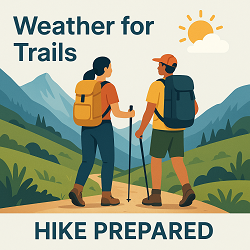North Central College, IL Weather Forecast and Current Conditions
Current Conditions From Nearby Local Station Switch to Metric Units

Feels Like 24°F
at
Current Conditions From Nearby Local Station Switch to Metric Units

Feels Like 24°F
at
Point Forecast at a Glance







7-Day Temperature Trend
Week Ahead Summary
High temperatures climb from 42°F to a high of 67°F by week's end. Unsettled weather expected with rain on most days, including one day with snow.
Climate Context
This week's forecast shows temperatures running 7°F above the historical average for November. Normal highs for this period are around 48°F with lows around 32°F.
This Date in Weather History
1940 - An Armistice Day storm raged across the Great Lakes Region and the Upper Midwest. A blizzard left 49 dead in Minnesota, and gales on Lake Michigan caused ship wrecks resulting in another 59 deaths. Up to seventeen inches of snow fell in Iowa, and at Duluth MN the barometric pressure reached 28.66 inches. The blizzard claimed a total of 154 lives, and killed thousands of cattle in Iowa. Whole towns were isolated by huge snowdrifts.
More on this and other weather history
North Central College, IL 7 Day Weather Forecast Details
Tuesday Nov 11

Day: A slight chance of snow before 8am. Partly sunny. High near 42, with temperatures falling to around 40 in the afternoon. Southwest wind 10 to 20 mph, with gusts as high as 35 mph. Chance of precipitation is 20%.

Night: Mostly clear, with a low around 34. West southwest wind 10 to 15 mph, with gusts as high as 25 mph.
Wednesday Nov 12

Day: Sunny, with a high near 50. West northwest wind around 15 mph, with gusts as high as 30 mph.

Night: Partly cloudy, with a low around 32. West wind 5 to 10 mph, with gusts as high as 20 mph.
Thursday Nov 13

Day: Mostly sunny, with a high near 54.

Night: Partly cloudy, with a low around 37.
Friday Nov 14

Day: Sunny, with a high near 58.

Night: Mostly cloudy, with a low around 46.
Saturday Nov 15

Day: Mostly cloudy, with a high near 67.

Night: A chance of rain. Mostly cloudy, with a low around 50.
Sunday Nov 16

Day: A chance of rain. Mostly sunny, with a high near 61.

Night: A chance of rain. Mostly clear, with a low around 37.
Monday Nov 17

Day: A chance of rain. Mostly sunny, with a high near 50.
Sun & Moon Monthly
Sunrise 6:38 AM
Sunset 4:37 PM
Last Light 5:06 PM
Moonset 12:49 PM

Contiguous United States Extremes
Mon's High Temperature
100 at 2 Miles West Of Pala, CA
Mon's Low Temperature
3 at Pellston, MI
Weather Folklore
When the milkweed closes its pod, expect rain.

Current subscribers - login to your ClearSky account
How We Provide Better Local Weather
Current conditions: We use the nearest available station to your location - including professional MESONET/MADIS and local weather stations - often miles closer than regional airports.
Forecasts: National Weather Service point forecasts predict for your specific area, not broad regional zones, making them far more relevant to your location.

